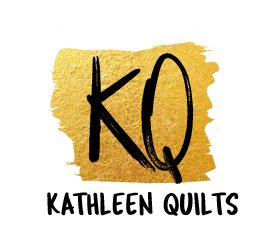The Business of Longarm Quilting - Ardelle's Quilting Business
1. Who are you? (Name, blog address, instagram handle, quick bio, whatever else you want to add).
I am Ardelle Kerr, Kathleen's mom. I am also known as RoseCity Quilter on Facebook and Instagram. My blog is www.rosecityquilter.wordpress.com. My husband I I are the owners of Quilting From the Heart in Camrose, Alberta, Canada. We will be celebrating 16 years in business this Febuary! I now run the long arm at our store full time (almost). Before that I was a stay at home Mom, of three beautiful daughters! And before that I was a teacher.
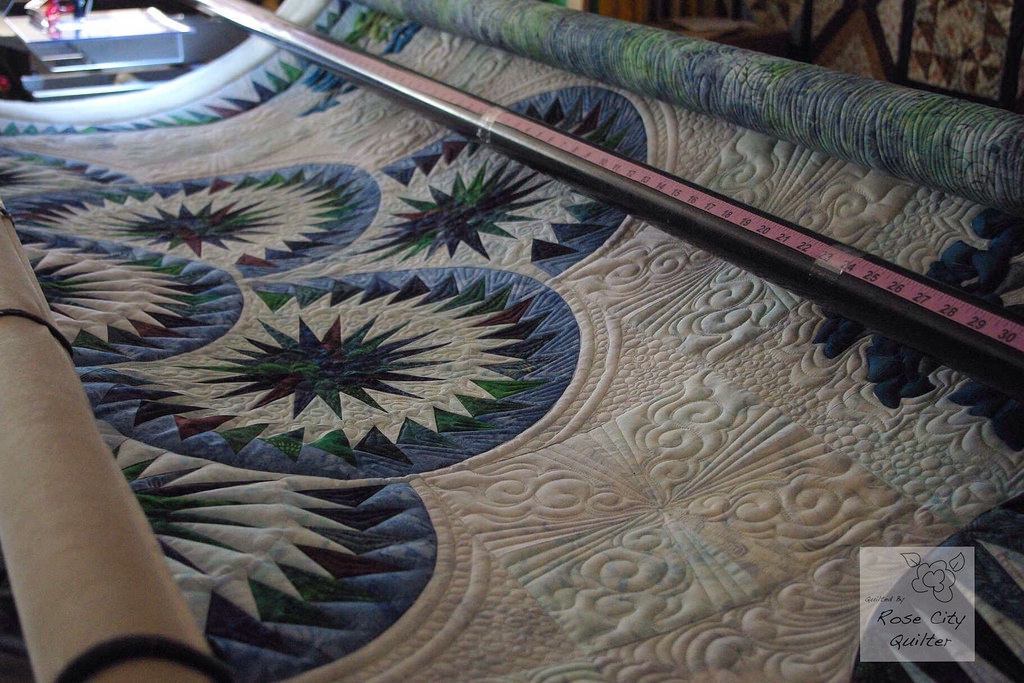
2. How long have you been long arming? How did you get into it?
I have been long arm quilting for 6 1/2 years. How I got into it is a little emotional for me. And it is a long story, but an important one to me.
Let's start by saying I wanted to get into it for a long time, but running our buisness and being a Mom just left no time.
Let me back up. When we opened our store in 2000, my husband was a dairy farmer on a family owned farm. He did his best to help, but had major commitments on the farm. He was always involved, but mostly on the bookkeeping end. Then an illness (Gillian Barre Synedrom) forced him to slow down a little and he took up quilting. Shortly after his illness Roger and his brother decided to sell the cows. Roger came to work at the store full time.
Two months later, when we were still trying to work out our roles, I was diagnosed with Breast Cancer, and our world came tumbling down. My treatments lasted a year. When I came back to work, I was really struggling. Roger had changed my systems while I was gone to suit his working style. My mastectomy was on my right side, and I was still very weak and could not put fabric away. I had a very bad case of Chemo brain (yes it is now a documented researched and medically accepted condition). I was struggling with where I fit in and my heart was not in it.
Then off we went to market. I wandered into APQS Long Arm booth, and played with a machine. I came alive. We left the booth, went for coffee and came back and ordered a machine. Yes folks, it was pretty spontaneous! But we realized things had changed and I needed a change.
So long story shortened, my Longarm was instrumental in my emotional recovery! I loved it and it gave me something new and exciting to focus on. And focus I did....
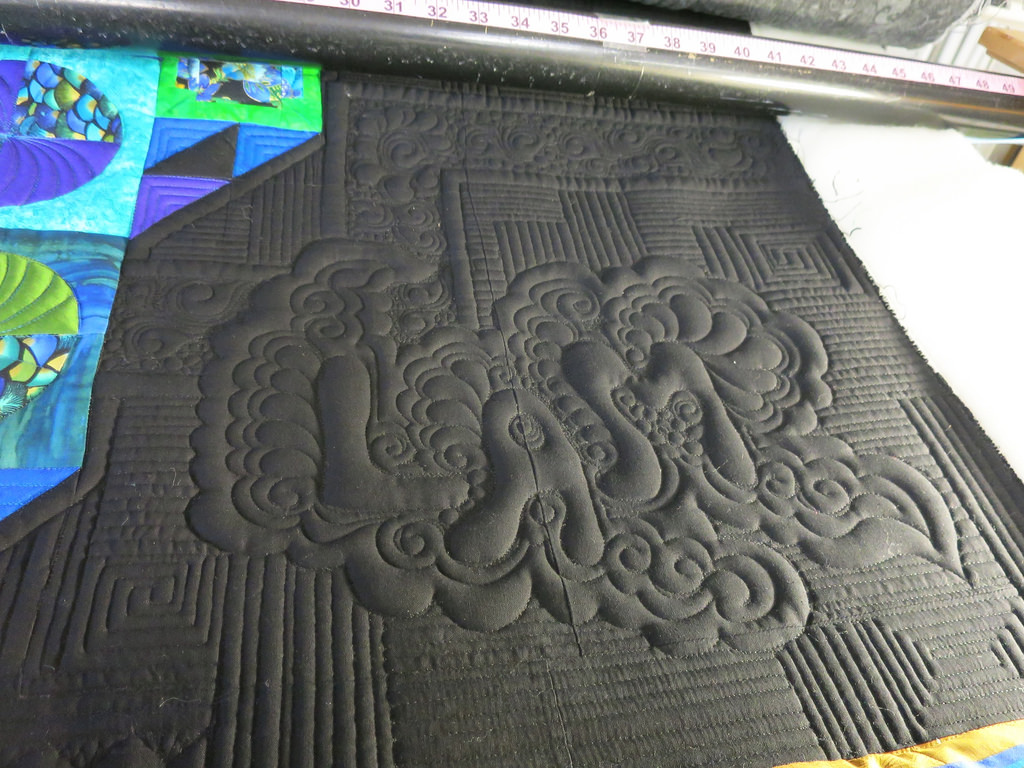
3. Is long arming your primary source of income or has it ever been? If not, what else do you do?
We still own our quilt shop, Quilting From the Heart, so thought I am almost full time on my machine, it is not my only source of income.
4. What is your process for booking/accepting customer quilts?
Customers phone our store or visit our store and place their name on my waiting list. I accept anyone who will wait for my almost year long list. I will not accept rush jobs.
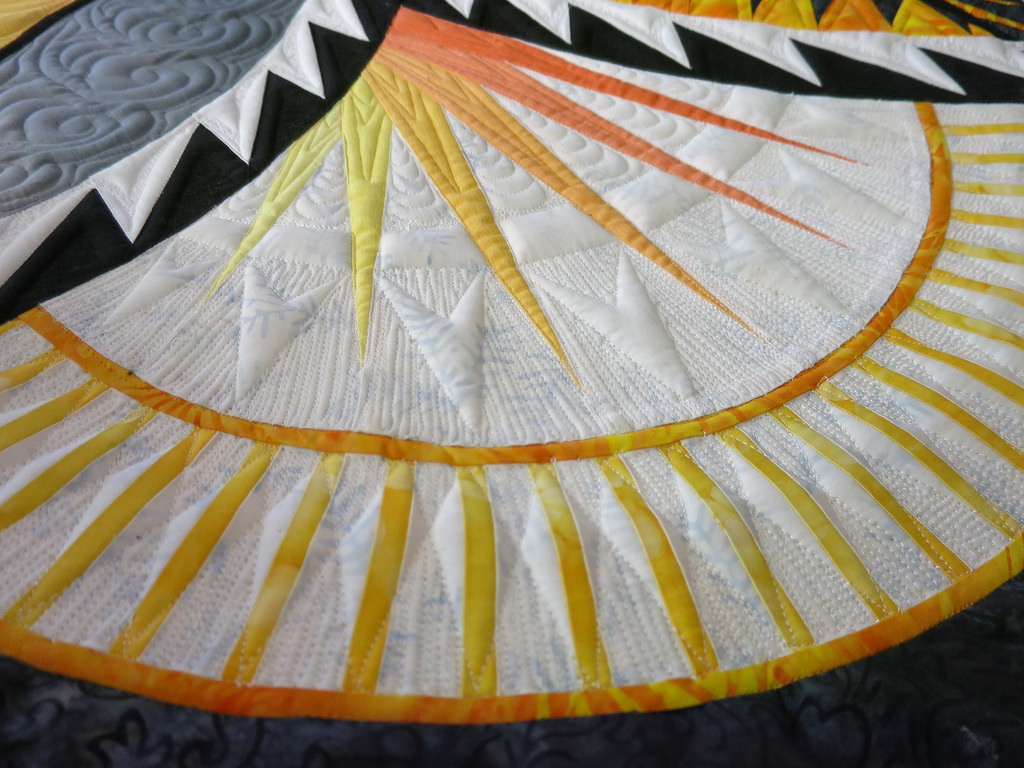
5. How do you determine the cost of quilting? (If you feel comfortable sharing what you charge, please do)
Pantos and all over designs range in price from$0.02-0.03/square inch to depending on density.
Custom quilting ranges between $0.08-0.12/square inch depending on density and complexity.
6. What type of quilts do you accept? Custom only? Modern only? Pantograph’s only? Anything someone want’s to give you? If you don’t accept all quilts, how do you tell clients you can’t quilt their quilt?
I accept all quilts. There was one English Paper piecing quilt early on that I recommended be hand quilted rather than machine quilted. If that same quilt were to come in today, I would accept it. Even though I accept all quilts, I receive mostly custom. I think part of that is because a year is too long to wait for all over/panto type quilting.
Our shop is a Judy Niemeyer Certified shop and Roger is also a Judy Niemeyer Certified instructor. Because of this I receive a lot of Judy Niemeyer quilts. Because I quilt so many of these quilts, I have gotten a reputation for quilting Judy Niemeyer quilts and I now get more of these quilts than anything else.
The only time I tell clients I cannot quilt there quilts is when my list is to long for their needs. Some try to pressure me into working them in, but I will not cave to that pressure. It is not fair to others on my list who are waiting patiently if I take rush jobs.
Mostly quilts I do not want take care of themselves as my price is high enough I tend to get mostly quilts I want anyways.
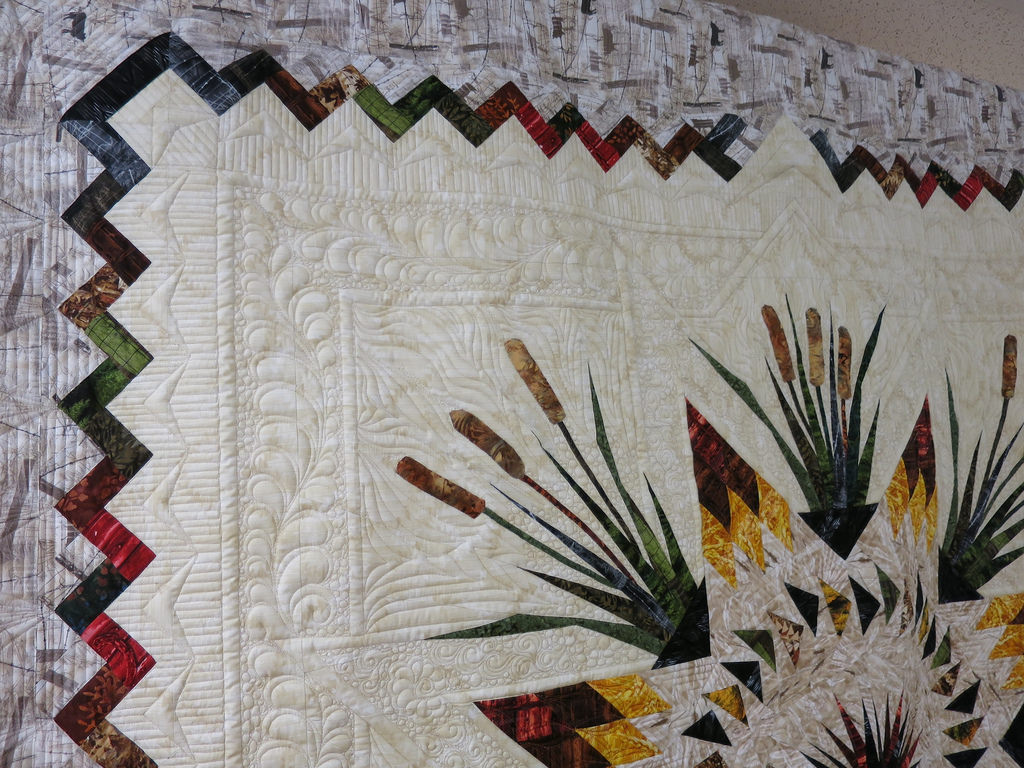
7. What do you do when you run into a problem with a customer quilts (excess fabric, holes in the piecing, blocks put in wrong, etc)?
I try to keep good communication going with the customer. I ask for phone numbers that I can reach a client at. If I run into a problem, whether it is their issue or mine, I contact them immediately. I find honesty is the best policy.
If I see something that needs fixed I contact the customer to see what she/he wants me to do. Most of the time I offer to fix it for a fee of $25/hour. It is faster if I fix it than if I wait for the customer, but if Infix it I am going to get paid! If it is a minor fix, I just fix it on the house.
The most common problem I have had is backing being too small. I always measure on intake, but sometimes I still miss that it is too small. When this happens I phone the customer and ask if she wants to piece something on, if she wants me to piece something on (against a fee of $25/ hr) or if she wants me to choose a new extra wide back from our store. The most common answer is for me to choose a new back from our store.
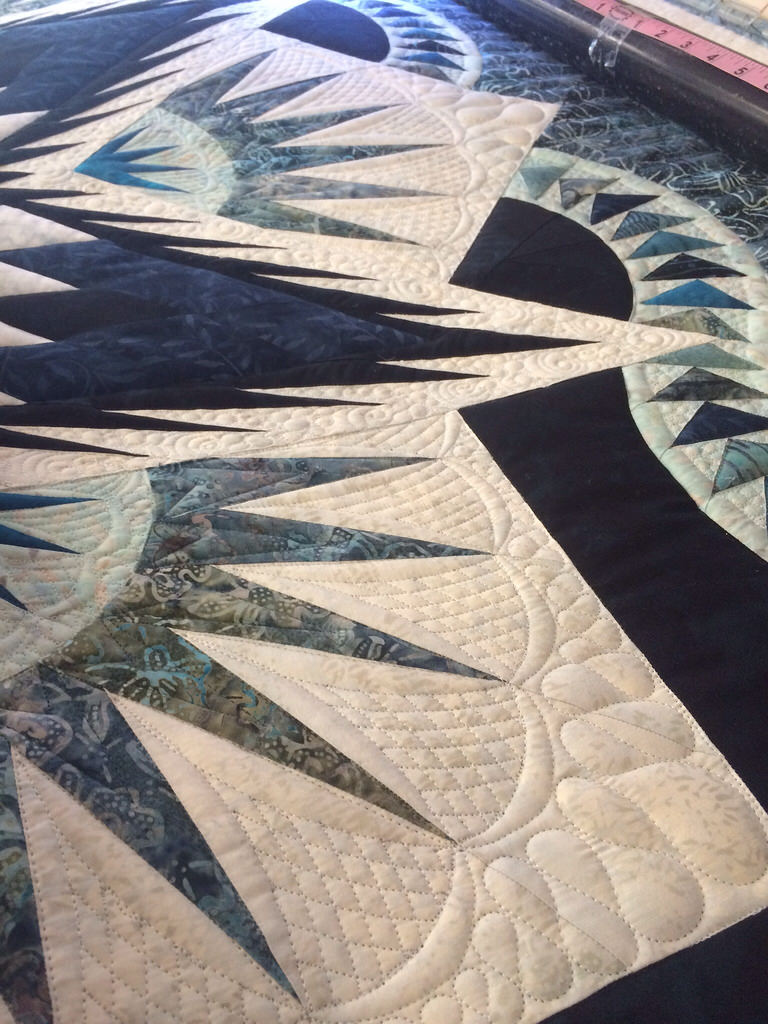
8. How do clients find you most often? Advertising, IG, blog, etc.
Most of my customers have either seen my quilting in our store or in one of Roger's classes/truck shows. Some others have seen my quilting on social media.
9. What social media do you use? Do you find it helpful to your business?
I have a Facebook page, an Instagram account, a blog and Kathleen set up my blog to automatically send a tweet, but that is all I do on Twitter.
I do find social media helpful in my business. I have received many new customers from these places, however, most of my customers still come from having personally seen my work.
10. Anything else to add?
One of the things that I find most helpful is the intake process and Quilting contracts. I think this is a very vital business process. I feel that a thorough intake process and a contract are key to avoiding problems with a client. The communication that this starts is the key. I discuss battings thread, and designs. I measure the quilt and backing and during this process subtly examine the quilt for problems. And of course I give a price and have the client sign a contract.
